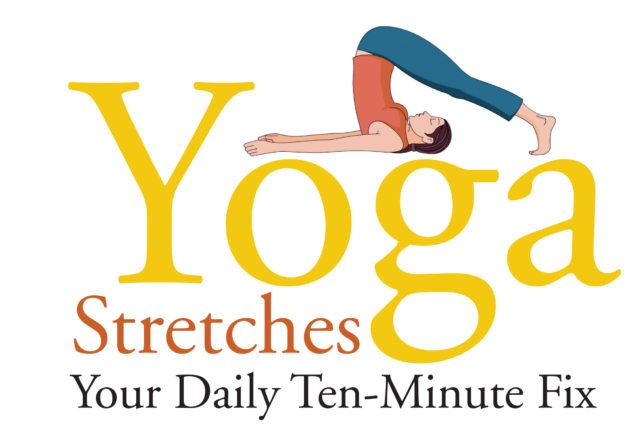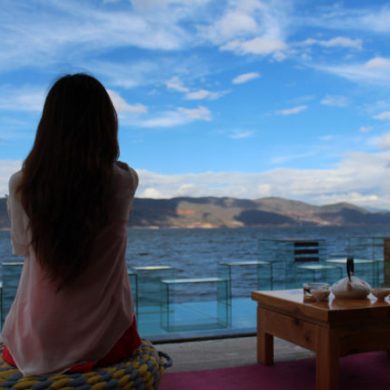Are you one of those who are just never able to create time to get to the gym, or manage a daily thirty-minute power walk? Do you lament the fact that there isn’t a treadmill in your home?
Having a busy schedule does not imply neglect of the most beautiful and potent instrument we own – our bodies. We mustn’t forget that for all the goals created by the mind, it is the body, which actually gets around to achieving the same.
The most delicious secret in fitness is that there are many accessible and simple ways to get in good physical shape. Even ten minutes in your own home is enough to get you healthy, radiant and full of those good hormones. Gym equipment and club membership aside, you will need nothing more than a yoga mat and a small exercise space, and ten minutes of your daily schedule.
Start By Commanding Your Mind
Commit to yourself, that no matter what time you sleep at night, or whatever the tasks to be accomplished the next day – you will not let go of this ten–minute exercise routine you have set aside for yourself.
For Those Perennially Disinclined To Exercise
A stirring way to get yourself moving every sleepy morning is to pin up those sexy pair of jeans, which do not fit you now, next to your bed. If that doesn’t work, juxtapose a picture of “slim you” next to your “currently not-so-fit you” photograph, and place these pictures in the house. If your doctor has advised you to practice yoga, you can also paste his prescription where you will be forced to read it. And voila…you’ll be stretching even before you brush your teeth.
Here’s a list of yoga postures, which have been designed to fit into your “I-don’t have-time-for-anything schedule.” You can do them in your bedroom, in your cabin, or building’s terrace. If there is a will, there will always be ten minutes!
Basic Rules
- Know your body’s limits. Consult a health professional before you sign up for yoga exercises, especially if you have major medical ailments. Most asanas (yogic postures) have limitations for medical conditions such as sciatica, lumbar spine pain, high myopia, pregnancy, hypertension, etc., and one must get to know to what lengths one could practice these asanas. For anyone who suffers from Sciatica, getting the help that professional doctors offer would be a good route to do down, especially if you are thinking about making your health your number one priority from now on. With any health problem, there is always a solution. Knowing that there are specialists out there that can be of assistance, at least you may no longer have to suffer from these pains. Hopefully soon, you’ll then be able to take part in yoga and not have to think about the pain.
2. It is advisable to start with a registered or certified yoga instructor for learning the asanas.
3.Practice yoga on an empty stomach.
4. Practice first thing in the morning. It will help you revitalize your mind and body, and keep you energized and ready for work.
5. If you can make time only in the evening, you must wind up your practice with meditation and relaxation, so that you do not go to bed super-charged.
6. Don’t jerk your body, always do the asanas slowly.
7. Start with easy poses and gradually move to advanced ones
8. Use a yoga mat. The science of yoga believes that energy or heat in our body is l ost with contact to the ground.
9. Take at least 20-second breaks between each asana, unless you’re doing a cluster series such as Surya Namaskar.
10. Practice yoga daily to reap maximum benefits.
The following combination of popular yoga poses can help you to have a stronger, more flexible and balanced body.
Asana 1
Standing Prayer Pose
(Stithprarthasana)
Start your session with this standing prayer pose. It helps in enhancing one’s concentration, faith and quietness.
Method:
-
- Stand erect with feet together on the yoga mat.
- Place palms together at the base of the sternum (Namaste Pose).
- Keep elbows and shoulders relaxed, and abdomen tucked in.
- Close eyes, remain steady, and breathe normally. A little swaying is normal.
- Open your eyes if you feel dizzy and stay in position for a minute.
Asana 2
Mountain Pose
(Tadasana)
The Mountain Pose helps you stretch and works on your thighs, calves, ankles and back. It can also improve the Range of Movement (ROM) of your shoulders. Your balance and concentration can also be improved with constant practice.
Caution: This yoga pose is not for those who suffer from vertigo, severe cardiac problems and acute calf muscle pain.
Method:
-
- Stand erect with one foot apart and parallel to each other.
- Inhaling, raise both arma and heels together, stand on toes and strech upwards.
- Rotate arms backwards to return down and lower heels, simultaneously. Exhale as you do this. Do three rounds of the above.
Asana 3
Triangle Pose
(Trikonasana)
In Hindu art, the triangle is a potent symbol for the Divine principle, and it is frequently found in the yantras used for meditation.
Caution: This asana is not for those suffering from acute disc prolapse, arthritis, or root canal stenosis. However, it is very effective in treating muscular and minor back pain and stiffness.
Method:
-
- Stand straight keeping a distance of about one and a half foot between the feet. Both the hands should hang parallel to the body, palms facing inside.
- Inhale and bring the right hand near the right toe or near the ankle and lift the left hand upwards and bend the neck to the left side and look at the left hand.
- Then while exhaling, come back to the original position and repeat the exercise on the other side as well.
Asana 4
Squatting Pose
(Utkatasana)
This asana is great for body awareness and concentration. It is good for relief from calf pain, early osteoarthritic knees, and muscular back pain.It may be worth a try, especially if it affecting you completing simple daily tasks.
Caution: It should be avoided by those having acute deep vein thrombosis, knee and severe back and femoral problems.
Method:
-
- Stand erect with feet one foot apart and parallel to each other.
- Inhaling 3 seconds, raise both arms up to chest level, parallel to the ground, palms facing down.
- As you raise your arms, simultaneously go up on your toes.
Once you are up; exhaling 3 seconds, bend your knees to squat your lower body, thighs pressing calves. - Hold breath for 6 seconds, and rise inhaling.
- Repeat five times
Asana 5
Dog Pose
(Adho Mukha Svanasana)
As illustrated, the Dog Pose improves flexibility of your spine, stretches the hips, middle and lower back, rejuvenates the body, and helps in preventing back problems.
Caution: This yoga pose should not be performed if you have serious back/ abdomen/knee pain or injury.
Method:
-
- Drop onto the floor on your‹ hands and knees.
- Set your knees directly below your hips and your hands slightly forward. Spread your palms on the ground.
- Exhale and lift your knees away‹ from the floor.
- At first keep the knees slightly bent and the heels lifted away from the floor.
- Then with an exhalation, push ‹ your top thighs back and stretch your heels down towards the floor.
- Straighten your knees and elbows and lock them.
- Firm your shoulder blades against‹ your back and try to take your chin as close as possible to your chest.
- To come out of this posture, walk two steps ahead, bringing hands and feet together and inhaling, come up.
- Stay in this pose for a maximum period of 2 minutes. Do two rounds.
Asana 6
Cobra Pose
(Bhujangasana)
This is to give the spine the opposite stretch you achieve in Adho Mukha Svanasana.
It is good for relief of muscular back pain, ankylosing spondylitis and strengthening of the spine.
Caution: It should be avoided by those suffering from a fat paunch caused by a Lordotic spine, hernia, cardiac ailments or hypertension, and severe back problems.
Method:
-
- Lie on the abdomen with legs‹ stretched and toes pointing out, feet together.
- Keep the palms on the floor, next to the chest, and forehead on the ground. Inhaling, slowly lift head and shoulders backwards, without putting any pressure on the palms.
- Retain breath for 6 seconds, an ‹ exhaling for 3 seconds return to original position, and relax.
- Do this pose thrice
Asana 7
Hand Foot Pose
(Hasta Padasana)
This asana is a favorite in most yoga classes as it is excellent for losing weight around the abdomen. It also promotes spinal flexibility and improves rigidity caused by spondilytis.
Caution: It must not be practiced by those with a very painful spine or severe back problems (lumbar region). It should also be avoided in vertigo, hernia, cardiac ailments or after any major abdominal surgery, or during pregnancy.
Method:
-
- Stand erect, with your feet‹ together.
- Inhaling, raise arms above the head, stopping just behind the ears.
- Tilt slightly back and exhaling, bend forward and down, holding ankles with hands, attempting to bring your head as close to your knees as possible.
- You must make sure your knees do not bend.
- Suspend breath if you can, for a‹ maximum of 6 seconds.
- Inhaling, return to starting‹ position.
- Do this pose thrice.
Asana 8
Corpse Pose
(Shavasana)
This is always the wind up pose in yoga, as it facilitates total relaxation. This calming asana instructs your body to completely surrender and let go of all thoughts and tension.
Caution: To be avoided by people having extremely low blood pressure, or those experiencing depression.
Method:
-
- Lie down on your back, arms one‹ foot away from your body and feet two feet apart from each other.
- Close your eyes; focus on your‹ breath to let go of your thoughts. Once you are settled, concentrate on yourbody parts, starting from the toes to the lower body, then to the middle, and then to your upper body, to consciously relax each muscle group.
- Do this asana at the end of your ‹ exercise session. You could also start the session with this pose, if you are highly stressed







